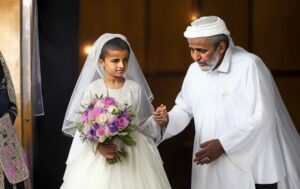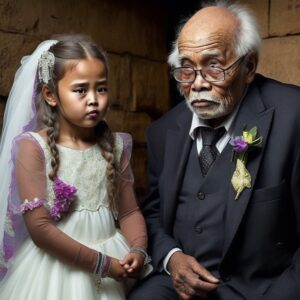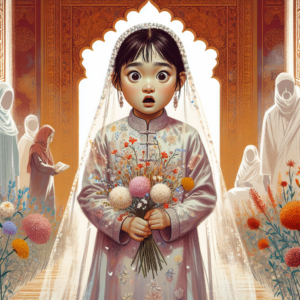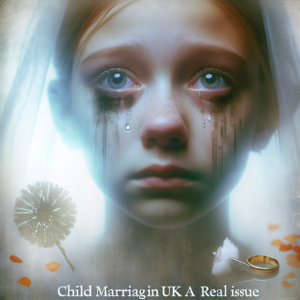Understanding the Global Issue of Child Marriage: Causes and Consequences
Introduction
Child marriage is a prevalent issue that affects millions of girls worldwide, violating their rights to education, health, and equal opportunities. Defined by the United Nations as a formal or informal marriage or union before the age of 18, child marriage restricts the potential and well-being of young girls, perpetuating a cycle of poverty and social inequality. This article aims to explore the causes and consequences of child marriage, shedding light on this global issue and advocating for change.
Causes of Child Marriage
1. Tradition and Culture: In many societies, child marriage is deeply rooted in tradition and cultural beliefs. It is often perceived as a way to protect girls from social risks or to preserve family honor. The pressure to conform to societal norms sometimes leads families to arrange early marriages for their daughters, even against their wishes.
2. Poverty: Economic factors significantly contribute to child marriage. Families living in poverty may see child marriage as a means of reducing the economic burden by transferring the responsibility of caring for their daughters to their husbands. Additionally, marrying off a young girl may be seen as reducing household expenses and increasing the family’s perceived economic security.
3. Gender Inequality: Deep-seated gender inequalities perpetuate child marriage. When girls are undervalued compared to boys, families may consider child marriage as an opportunity to secure their future by transferring the burden of their care and economic responsibility to their husbands. These inequalities result from social norms, discriminatory laws, and limited access to education.
4. Lack of Education: The lack of education, particularly for girls, is a significant contributing factor to child marriage. When girls are denied access to education, their potential for personal development and future economic opportunities diminishes. Education plays a crucial role in empowering girls, raising awareness about their rights, and increasing their ability to make informed decisions about their lives.
Consequences of Child Marriage
1. Health Risks: Child marriage exposes girls to physical and psychological health risks. Young brides are more vulnerable to complications during pregnancy and childbirth, as their bodies are not fully developed. They face a higher risk of obstetric fistula, infant mortality, and other reproductive health problems. Moreover, child brides are often subjected to sexual abuse, domestic violence, and forced sexual relations.
2. Limited Education and Economic Opportunities: Early marriage abruptly ends a girl’s education and limits her access to economic opportunities. This perpetuates the cycle of poverty, as child brides are less likely to acquire the skills and knowledge necessary for employment. The lack of education also restricts their ability to advocate for their rights, participate in decision-making processes, or access healthcare and social welfare services.
3. Increased Vulnerability to Sexual Exploitation: Child brides are more susceptible to sexual exploitation, including forced and early onset of sexual activity. They frequently lack the knowledge and agency to make informed decisions about their bodies, leading to a higher likelihood of contracting sexually transmitted infections or becoming victims of human trafficking.
4. Inter-generational Cycle: Child marriage perpetuates the inter-generational cycle of poverty and inequality. When girls are married off at a young age, they often become mothers themselves before they are physically, emotionally, and financially ready. Their children, especially daughters, are more likely to face similar challenges, relegating future generations to the same cycle of limited opportunities.
Frequently Asked Questions (FAQs)
1. Are boys affected by child marriage?
Although child marriage predominantly affects girls, boys can also be victims. However, the prevalence of child marriage among boys is significantly lower than among girls.
2. What are the legal and policy frameworks addressing child marriage?
Numerous legal and policy frameworks have been established to combat child marriage on a global scale. These include international conventions such as the Convention on the Rights of the Child and the Convention on the Elimination of All Forms of Discrimination against Women. Additionally, many countries have passed national laws to address child marriage.
3. How can child marriage be prevented?
Preventing child marriage requires a multi-faceted approach that addresses the root causes. Strategies involve improving access to quality education, raising awareness about the negative consequences of child marriage, engaging communities and religious leaders, empowering girls, and enhancing legal frameworks and enforcement.
4. What is the role of education in combating child marriage?
Education plays a crucial role in preventing child marriage. Providing access to quality education for girls helps raise awareness about their rights, increases their knowledge and skills, and empowers them to make informed decisions about their lives. Education also enables girls to find alternative paths and opportunities beyond early marriages.
Conclusion
Child marriage remains a global issue that requires urgent attention to protect the rights and well-being of millions of girls worldwide. Understanding its causes and consequences is crucial to develop effective strategies to prevent and address this harmful practice. By raising awareness, implementing supportive policies and programs, and empowering girls through education, we can work towards eliminating child marriage and creating a future where every child has the opportunity to thrive.















